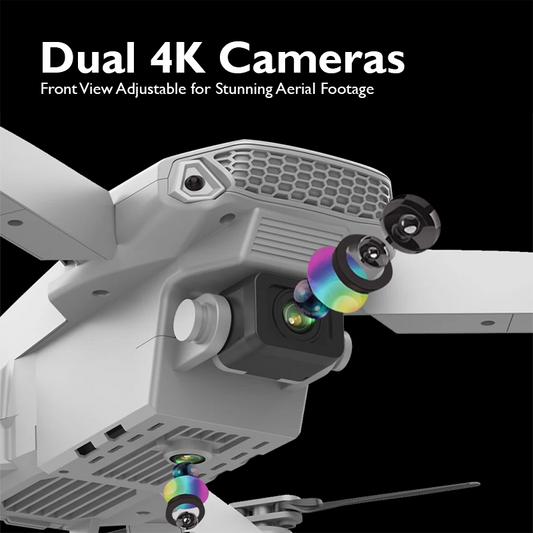How to Use Drones for Urban Green Belt Development and Conservation

In the ever-expanding concrete jungles of urban landscapes, the importance of preserving green spaces cannot be overstated. Urban green belts play a crucial role in maintaining ecological balance, fostering biodiversity, and providing much-needed breathing space for city dwellers. However, with rapid urbanization, these green lungs are under constant threat. Enter drones– the versatile aerial tools that hold immense potential for not only monitoring but also actively contributing to urban green belt development and conservation efforts.
Understanding Urban Green Belt Development and Conservation

Before delving into the specifics of how drones can aid in green belt development and conservation, let’s first grasp the significance of these green spaces. Urban green belts are designated areas of open land surrounding or within urban areas, primarily intended for conservation purposes. These green belts serve multiple functions:
1. Biodiversity Hotspots
Green belts provide habitats for diverse flora and fauna, including many endangered species.
2. Ecosystem Services
They offer essential ecosystem services such as air purification, carbon sequestration, and stormwater management.
3. Recreational Spaces
These areas offer opportunities for outdoor activities, exercise, and relaxation, contributing to the physical and mental well-being of urban residents.
The Role of Drones in Green Belt Development

Drones, equipped with advanced technology and sensors, have emerged as invaluable tools for monitoring and managing urban green spaces. Here’s how they can be utilized effectively:
1. Aerial Surveys and Mapping
Drones equipped with high-resolution cameras and LiDAR (Light Detection and Ranging) sensors can capture detailed aerial imagery and generate accurate 3D maps of green belt areas. This data is invaluable for assessing vegetation health, identifying land-use patterns, and detecting changes over time.
2. Vegetation Monitoring and Management
By employing multispectral and hyperspectral sensors, drones can provide detailed insights into vegetation health, including indicators of stress, disease, or invasive species infestation. This information enables authorities to take timely action, such as targeted pest control or reforestation efforts.
3. Wildlife Monitoring and Conservation
Thermal imaging cameras mounted on drones allow for non-invasive wildlife monitoring, particularly useful for elusive or nocturnal species. Conservationists can use this data to track animal populations, monitor migration patterns, and identify critical habitats that require protection.
4. Illegal Activity Detection
Drones equipped with cameras and sensors can be deployed for monitoring and detecting illegal activities such as poaching, deforestation, or unauthorized construction within green belt areas. Real-time surveillance capabilities enable authorities to respond swiftly to such threats.
Best Practices for Using Drones in Green Belt Development

While drones offer immense potential for green belt development and conservation, their effective utilization requires adherence to certain best practices:
i. Regulatory Compliance
Familiarize yourself with local regulations regarding drone operations, including airspace restrictions, flight altitude limits, and licensing requirements. Ensure that all drone operations are conducted in compliance with applicable laws and regulations.
ii. Safety First
Prioritize safety at all times. Conduct thorough pre-flight checks to ensure that the drone and its components are in optimal condition. Maintain a safe distance from people, buildings, and wildlife during flight operations.
iii. Data Security and Privacy
Exercise caution when collecting and storing aerial data, particularly if it includes sensitive information such as wildlife habitats or protected species. Implement robust data security measures to prevent unauthorized access or misuse of collected data.
iv. Collaboration and Stakeholder Engagement
Foster collaboration with local authorities, environmental organizations, and community groups involved in green belt development and conservation efforts. Solicit feedback and input from stakeholders to ensure that drone operations align with broader conservation goals.
v. Continuous Monitoring and Evaluation
Regularly assess the effectiveness of drone-based monitoring and management strategies. Adjust methodologies and protocols as necessary based on feedback, emerging technologies, and evolving conservation priorities.
Case Studies: Drones in Action
Let’s explore some real-world examples of how drones are being deployed for urban green belt development and conservation:
a. Singapore’s Biodiversity Monitoring

The National Parks Board of Singapore utilizes drones equipped with thermal cameras to conduct nocturnal surveys of wildlife in urban parks and nature reserves. This data informs conservation strategies and helps identify areas for habitat enhancement.
b. Los Angeles River Restoration

In Los Angeles, drones are employed to monitor the progress of restoration efforts along the Los Angeles River, including vegetation restoration, erosion control, and habitat enhancement. High-resolution aerial imagery enables project managers to assess the effectiveness of restoration activities and prioritize future interventions.
In conclusion, drones offer a powerful toolkit for urban planners, conservationists, and policymakers striving to protect and enhance urban green belt areas. By harnessing the capabilities of drones for aerial surveys, vegetation monitoring, wildlife conservation, and illegal activity detection, stakeholders can make informed decisions and implement targeted interventions to ensure the long-term sustainability of these invaluable green spaces. However, successful drone deployment requires careful planning, regulatory compliance, and stakeholder engagement. With responsible use and continuous innovation, drones can play a pivotal role in shaping the future of urban green belt development and conservation.
Explore a variety of drones at our online drone store.
Happy Flying!











